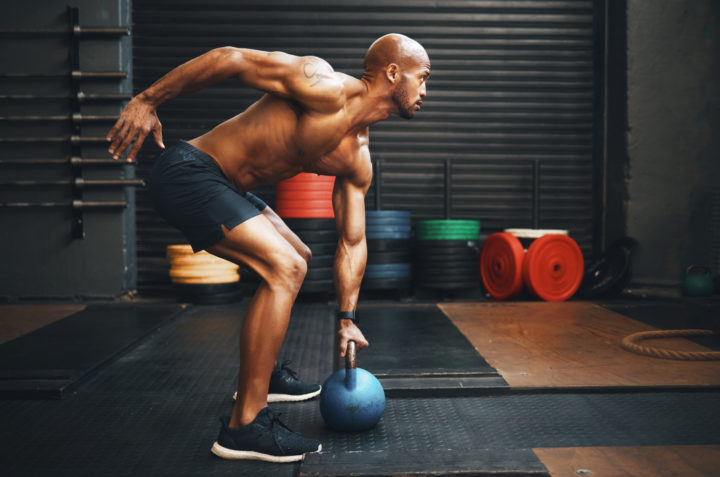Strength training can be intimidating if you’ve never really done it before, but it doesn’t have to be. While the phrase “strength training” might make you think of bodybuilders lifting hundreds of pounds at the gym, the truth is that strength training is for everyone, and it won’t necessarily give you huge, bulging muscles (unless that’s what you want to work toward, of course). You’re never too young or too old to add strength training and a strength training pre-workout to your routine. Doing so can make you stronger and healthier.
The Health Benefits of Strength Training
Strength training helps to increase muscle size and strength, so you’ll be able to perform better in any kind of sport, from running to boxing. Building your muscle strength can also make everyday tasks easier, like climbing stairs or carrying groceries in from the car. It can also help you burn calories more efficiently, meaning that you might lose excess fat and gain a fitter appearance. Strength training can also help improve your cardiovascular health by strengthening your heart and lungs.
It’s even been found to lower your risk of heart disease and cancer. And building stronger muscles can help to improve your balance as well, which can keep you from falling and being injured. You might even find that working out is good for your mental health, too: It can release endorphins that make you feel good, and pushing through to your next fitness goal can increase your mental resilience.
What You Should Know Before Starting
Before you start any new fitness routine, you need to make sure that you’re doing it safely. If you have any existing medical conditions, start by asking your doctor for advice about which types of exercises you should focus on and which you should avoid. Then, plan out your workout routine, making sure to include warm-up stretches and cool-down stretches, which can help to prevent injury. Another way to stay safe while working out is to make sure that you don’t do any strenuous exercises that place the weight above you without a spotter. A spotter is a helper who can watch you work out and step in to help if you start to struggle in a potentially dangerous situation.
Always remember to set realistic goals for yourself. It may be tempting to go overboard but remember that your body also needs rest to repair itself between workouts. It also needs adequate fuel: Good pre-workout and post-workout nutrition give your body the materials to repair damaged muscle fibers and make recovery faster. Before and after every workout, be sure to eat plenty of healthy carbs and some lean protein.
How to Warm Up
Loosening up your muscles before and after each workout can help you avoid injury. A good way to get started is with a little bit of light cardio, like a light jog or a fast walk, just to get your muscles moving and your blood pumping. Then, warm up each muscle group that you plan to work on that day by doing some basic stretches. For instance, if it’s leg day, you should stretch out your calves, hamstrings, and quadriceps. Hold each static stretch for 20 to 30 seconds.
Warming up properly gets your muscles and joints ready for a workout and helps to prevent injury. Once you’re done with your strength training workout, go back and do your warm-ups again to cool down. Stretching after a workout helps your body to get rid of lactic acid created during your workout which will make you sore.
Strength Training Exercises
There are lots of different types of strength training exercises that focus on different parts of your body. Many of these don’t even require you to go to the gym: You can do a lot with your body weight and things you might have at home. For instance, push-ups are great for building upper-body strength, and doing squats and lunges will give you stronger legs. If you have a pair of dumbbells, that opens up lots of possibilities like lateral raises to tone your shoulders and bench presses to build up your chest muscles.
But if you don’t have weights at home, you can make some out of things like old socks, milk jugs, or cans of food. If you have a gym membership, you’ll have the widest variety of options, including machines specially designed to help you work different muscle groups and barbells made for exercises like deadlifts and bench presses.
Additional Strength Training Resources
- Ten Weight Training Tips for Beginners
- Strength and Resistance Training Exercise
- Simple Ways to Start Strength Training
- Strength Training Workouts
- How to Overcome Gym Intimidation and Start Weightlifting
- Seven Reasons Why Strength Training Is Key to Living Longer
- Four Reasons to Add Strength Training to Your Workout Routine
- Seven Tips for a Safe and Successful Strength Training Program
- Strength Training for Teens: What to Know
- The Best Bicep Exercises for Strong Arms
- Benefits of Strength Training and Tips for Getting Started
- Home and Gym Workouts for Beginners
- Strength Training for Beginners (and Experts, Too)
- Lower-Back Exercises for Strength and Muscle Growth
- What Are the Eight Biggest Benefits of Strength Training?
- Top Exercises to Improve Shoulder Strength
- Five Benefits of Strength Training
- Strength Training: Get Stronger, Leaner, and Healthier
Related Posts:
- How To Count Macros: A Step By Step Guide
- Best Pre-Workout Ingredients for Strength & Power
- What are the Most Common Nootropic Ingredients in Pre-Workouts?
- How to Use a Nutrition Label
- Top 10 Vegan Pre-Workouts
